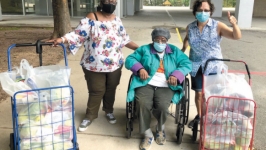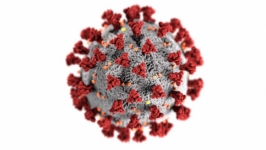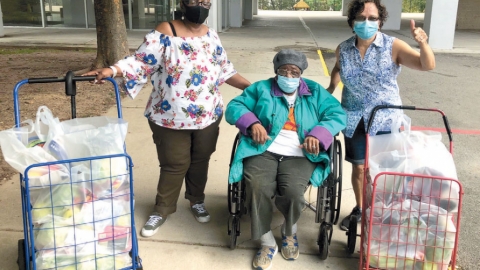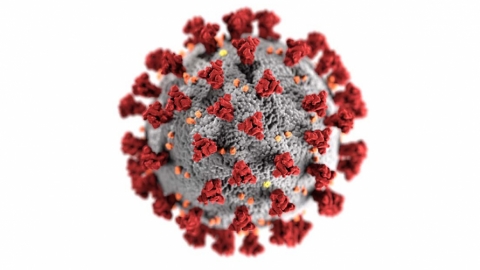Stepping Up to Fight Food Insecurity
Earlier this year, camera drones from national news outlets panned over thousands of automobiles in line for hours at emergency food distribution in Texas and California. Covid-19 had arrived, and its impact on Americans’ day-to-day lives was devastating. In a remarkably short time, a staggering number of Americans found themselves struggling to put food on the table.
Closer to home, The New York Times reported long lines at a food pantry in Summit in its April 30 article titled “Food Lines a Mile Long in the Nation’s Second-Wealthiest State.” Before the pandemic, according to the Times, Summit’s Grace Pantry has seen 100 families every Tuesday. Now, the number had risen to 515 families. In Atlantic County’s Egg Harbor, the prospect of 30 pounds of food attracted so many vehicles that there was road traffic for nearly a mile in three directions. In Park Ridge, reported The Star Ledger in June, vehicles filled the parking lot, then spilled out into the street at the TriBoro Food Pantry. Many patrons waited for over an hour even before volunteers arrived.
Whether from an affluent commuter town in Union County, an urban center or surrounded by some of the wealthiest zip codes in Bergen County, New Jerseyans are among the more than 51 million unemployed Americans needing food; many of them laid off due to the Coronavirus pandemic.
Despite being one of the wealthiest states in the country based on median income, New Jersey is projected to experience a disproportionate increase in food insecurity due to the pandemic. According to “Covid 19’s Impact on Food Insecurity in New Jersey,” a report published in September by the Community FoodBank of New Jersey, residents are projected to see a 56 percent increase in food insecurity, a rise that far outpaces similar projections for neighboring Pennsylvania, Delaware, and New York. More than 1.2 million New Jersey residents are expected to be food insecure in 2020, with 431,000 newly food insecure this year.
Fortunately, here in New Jersey, organizations like Table to Table are stepping up to help feed residents who may be jobless, have low incomes, or just be anxious and weary from the effects of Covid-19—and are experiencing food insecurity as a result. Table to Table is a nonprofit food rescue organization that has been around for 21 years. During this pandemic, the organization has seven refrigerated trucks on the road, picking up food that would have been wasted from grocery stores, catering facilities, food purveyors, and meal kit providers. Volunteers and staff deliver the food to agencies directly feeding the hungry through soup kitchens, shelters, daycare and senior centers, and other locations in Bergen, Hudson, Essex, and Passaic counties.
Julie Kinner is Table to Table’s recipient relations and community affairs director. She has been with Table to Table since the beginning, starting as a volunteer, then working part time, and finally employed full-time for nearly a dozen years.
“The ‘community affairs’ part of my job allows me to talk about Table to Table to anyone who will listen. I speak at schools, Chamber of Commerce meetings, Rotary Clubs, etc. I love what we do, and I love telling everyone about it!” The “recipient relations” part of Kinner’s job allows her to work with many Table to Table partners that receive food in Northern New Jersey. From application to delivery, she’s with those partners every step of the way.
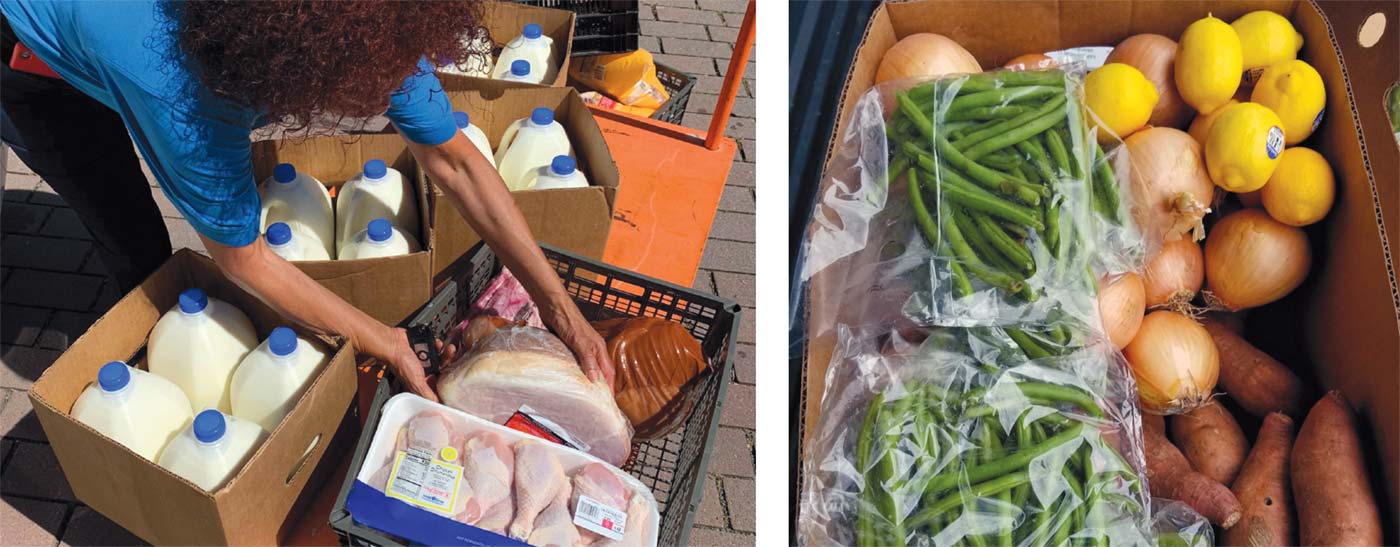
More than 1.2 million New Jersey residents are expected to be food insecure in 2020, with 431,000 newly food insecure this year.
SOURCE: “Covid 19’s Impact on Food Insecurity in New Jersey”, Community FoodBank of New Jersey, 2020
“Knowing that the food I am helping to see get delivered is going to go into people’s homes and onto their dinner tables makes this very personal to me. A pastor thanked me a long time ago by saying, ‘We aren’t just feeding their stomachs, we are feeding their souls.’ That has stayed with me all these years.”
Covid-19 has created “a new normal” that, for many, is likely here to stay. Before the pandemic, Table to Table had 250 agencies that depended on the organization to help them provide food to the people who needed it the most. Due to social distancing practices and guidelines, this past spring the number of agencies was slashed to just over 70.
Kinner says, “Many of the agencies [were run] by seniors. Mostly volunteers. They were scared to come out. Heck, in the beginning everyone was afraid to come out. But the seniors especially.” The food-rescue organization intended to deliver 27 million meals in 2020. As of mid-October, Table to Table already delivered 30 million meals. In other words, Table to Table has had to do a whole lot more with a whole lot less.
“The beginning was a challenge. I would love to say we were prepared, but we were not. We rely on our incredible donors as our food source. And if you remember, the grocery store shelves were empty. They couldn’t give us what they didn’t have,” says Kinner. “Thankfully, our food donors truly are amazing. They knew there was a growing need in the community and they really stepped up. Then the agencies closed. So many of our food pantry partners are run by senior citizens. They closed almost immediately. Families in the Newark Public Schools receive a large amount of food from us and, once the schools closed, that source of food for the school families was gone. It took a couple weeks, but we found more partners and more donors. Some of the volunteers from the schools were even able to open pantries out of their local churches and get the food to those school families and other members in the community.”
According to Kinner, Covid-19 changed their operations essentially overnight. “In mid-March, [Executive Director] Ilene Isaacs closed Table to Table’s office [in Hasbrouck Heights]. There are eight of us there and overnight, like so many others, we shifted to working from home.” For the nonprofit’s drivers, however, it was a different story.
“They certainly could not work from home; they were essential. We were able to cut their days down from five to three, while still receiving a full week paycheck. Then we started stocking up on masks, gloves, hand sanitizer, wipes, anything we could find. When the grocery stores ran out of all those things, we put the word out on social media that we needed help.”
The Department of Health and Human Services in Jersey City supplied Table to Table with cases of antiseptic wipes and The WE Project, also in Jersey City, supplied masks, gloves, and hand sanitizer.
It has been many months since the start of this pandemic, and some have tried to return to what “normal” looked like before mid-March. Employees have returned to their office buildings; many students and educators have returned to the classroom. There is even a sense of normalcy returning to Table to Table. While they’re not yet at a their pre-pandemic service level of 250 partner agencies, Table to Table is approaching 180; more than 100 agencies since April. Even Table to Table’s essential employees are returning to full-time schedules.
“Thankfully, all the drivers stayed healthy and are back to their five-day weeks,” says Kinner. “They still wear masks and still stay at a distance and still wipe down their trucks constantly.”
Realizing that there is still much uncertainty, Kinner has a message for those who need help: “Every single person is one paycheck away from being in [food assistance] line... It is nothing to be ashamed about. It is nothing to be embarrassed about. What’s most important is feeding yourself, keeping yourself healthy, and keeping your family members strong and healthy. It was Virginia Woolf who said, “One cannot think well, love well, sleep well, if one has not dined well.” You can’t focus, you can’t learn, you can’t love... You can’t do any of these things on an empty stomach.”



